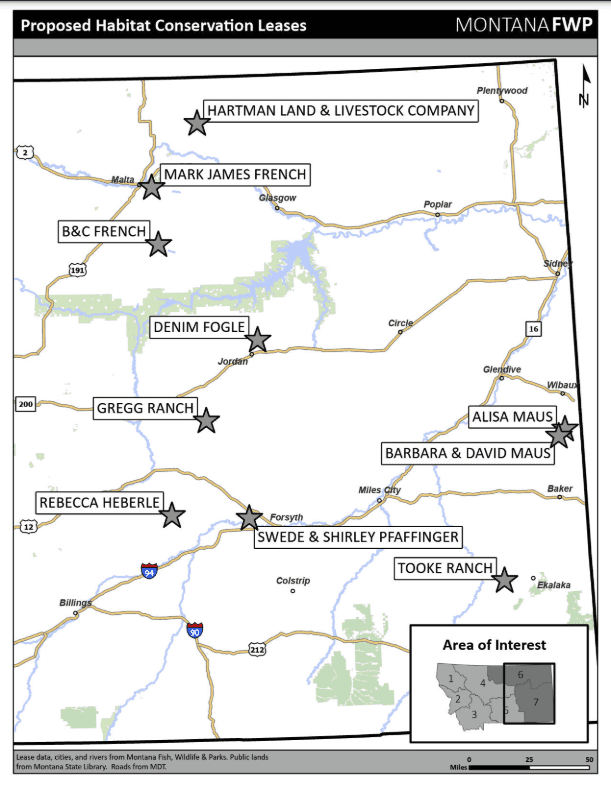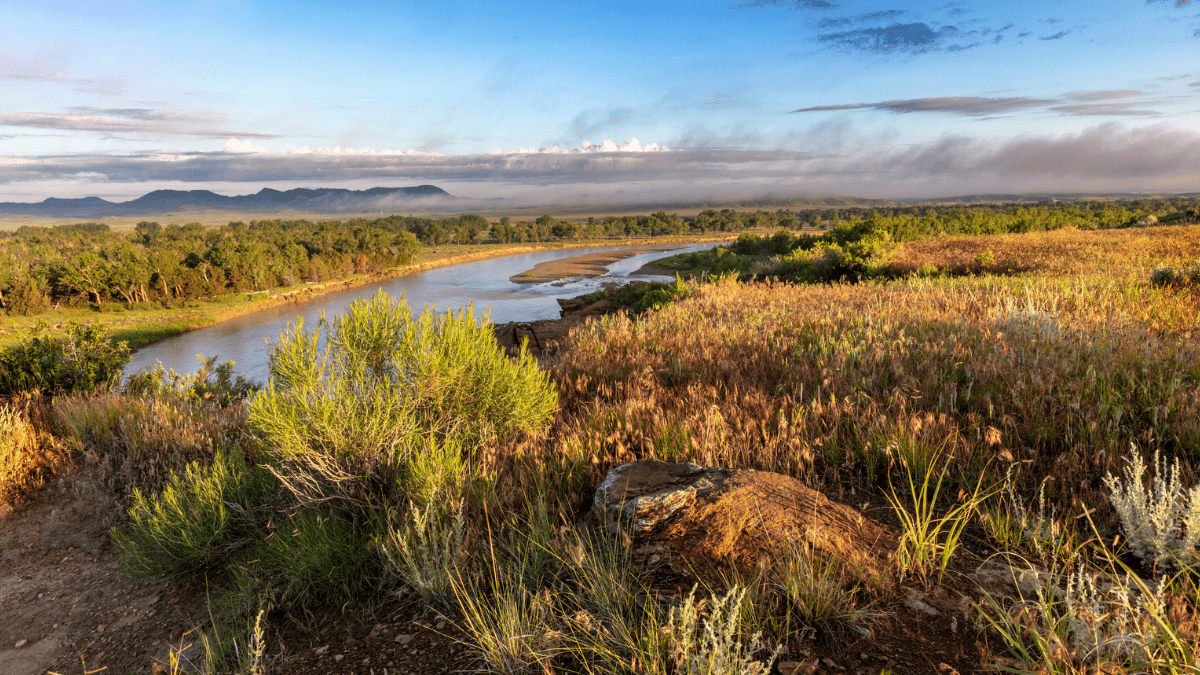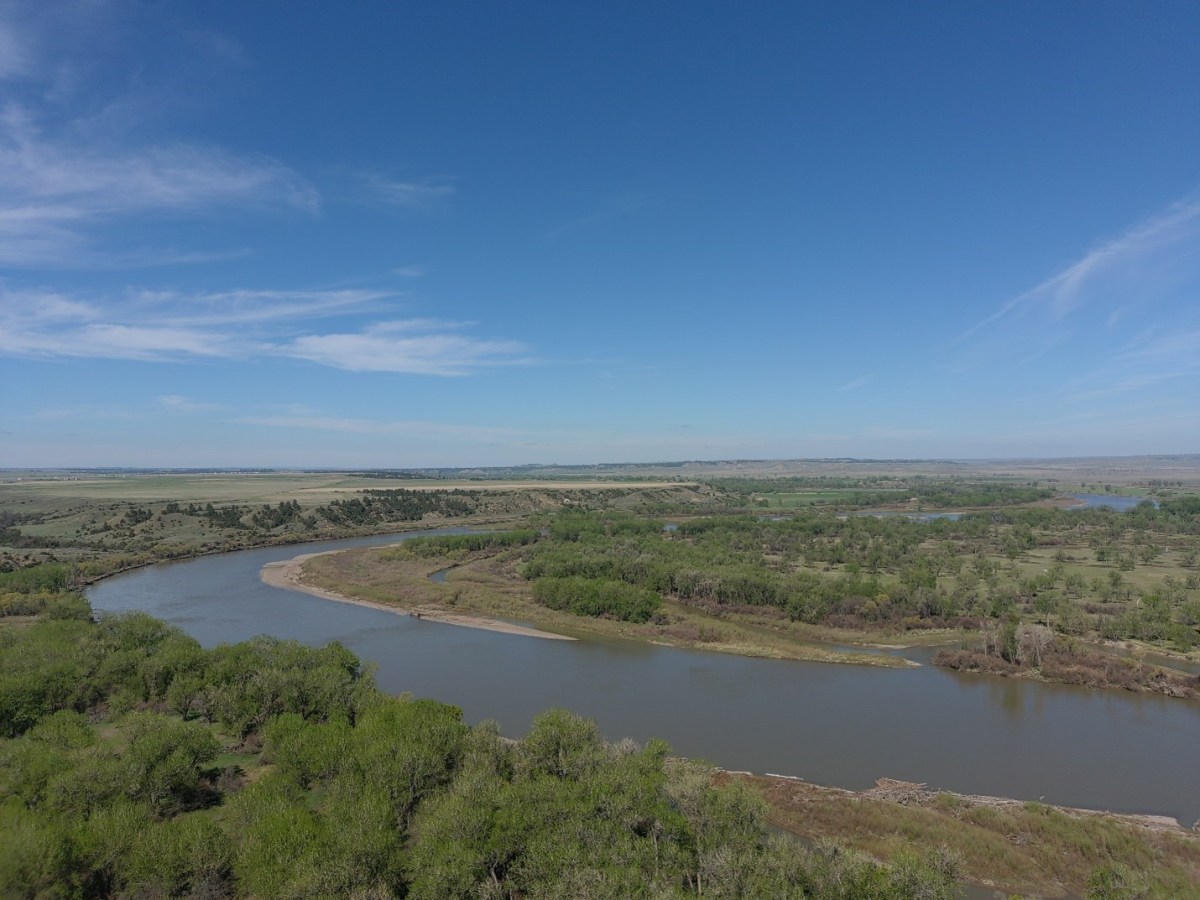Montana Fish, Wildlife, and Parks has received tentative approval to enroll 10 eastern Montana properties in a newly launched state program to conserve prairie habitat.
The Montana Fish and Wildlife Commission on Thursday voted unanimously to authorize the Prairie Habitat Conservation Lease Program’s first batch of agreements and signaled its support for the program’s larger objective of putting 500,000 acres of eastern Montana prairie into 40-year conservation lease agreements.
The program aims to protect the habitat for a variety of prairie species, ranging from mule deer and pronghorn to waterfowl, sage grouse and other grassland birds. The leases are also intended to support ongoing agricultural operations, public hunting and other forms of wildlife-related recreation. The program “may also help with avoiding potential federal listings of imperiled native species,” according to an FWP memo to commissioners.
RELATED
Sharing the love of the Lower Yellowstone
Residents of eastern Montana say it’s about time the Lower Yellowstone River is recognized for its recreational opportunities and untapped economic potential. The Legislature has allocated $4 million to start bringing that vision to life.
The first round of leases encompasses more than 52,000 acres. The largest lease involves a $1.4 million payment for the landowner’s agreement to place an 11,600-acre property south of Malta under a 40-year conservation agreement. The Montana Land Board must sign off on that lease and seven of the others because the properties are over 500 acres or the lease agreement tops $1 million — criteria that trigger the Land Board’s approval per a law legislators passed in 2021.

All 10 properties will allow some degree of public hunting during commission-approved hunting seasons, generally September through December, according to Ken McDonald with FWP’s wildlife division. The leases will be funded by a variety of sources, including Habitat Montana, the Migratory Bird Wetland Program and the Pittman-Robertson fund, which funnels federal taxes on firearms, archery equipment and ammunition toward state-led wildlife restoration projects.
Three people spoke in favor of the program during the commission’s remote meeting on Thursday, although one commenter noted that he does have some reservations about the agency’s shift away from perpetual easements.
Montana Wildlife Federation Conservation Director Jeff Lukas said his organization originally opposed the transition to termed leases due to concern that adopting time-limited leases does not provide the “bang for the buck that permanent conservation leases do for a similar cost.”
However, Lukas continued, “Temporary leases are better than no leases at all, [and] we support using Habitat Montana funds for these leases when these funds would otherwise be unused.”
Ben Lamb with the Montana Conservation Society said he appreciated that the program would protect habitat, increase public access and help farmers and ranchers “make sure the home place is kept in the family.”
related
Forever no more? Bill seeks to restrict state’s access to perpetual conservation easements
A bill that would roll back the state’s ability to purchase permanent conservation easements garnered opposition from an unlikely collection of opponents. Logging and agricultural groups were joined by conservation organizations and hunting and fishing groups in their request that the Senate FIsh and Game Committee table Senate Bill 357.
Fish and Wildlife Commission votes to support purchase of Lower Yellowstone River property
The Montana Fish and Wildlife Commission unanimously voted to approve the acquisition of a new wildlife management area proposed for the Lower Yellowstone River. Supporters of the Wildcat Bend Wildlife Management Area said it meets access, habitat and economic development goals for communities located in a sparsely populated region of Montana.
“That can really be a game changer for a lot of traditional families,” he said, adding that he appreciated that the program allows for faster approval and more certainty on its outcome than the permanent conservation easements that have been the norm in Montana.
“As someone who was really skeptical in the beginning and is now fully on board, I just want to say what a tremendous job the agency has done in something that looks like it could be a really good benefit to everybody — and hopefully lead to more conservation easements in the future,” Lamb said.
In a process similar to the one commissioners used Thursday, future lease agreements will go before the commission for approval.
LATEST STORIES
Tribes honor the birth of a rare white buffalo calf in Yellowstone
A white buffalo calf was born in the park’s vast and lush Lamar Valley. To the several tribes who revere American bison, the calf’s appearance was both the fulfillment of sacred prophecy and a message to take better care of the Earth.
Federal loan repayment plan partially blocked by courts
Republican Attorney General Austin Knudsen welcomed a federal court injunction this week temporarily blocking the final phase of President Joe Biden’s latest plan to rein in student debt.
Judge strikes down Montana law defining sex as only male or female for procedural reasons
A judge struck down a Montana law that defined “sex” in state law as only male or female, finding that it was unconstitutional.




